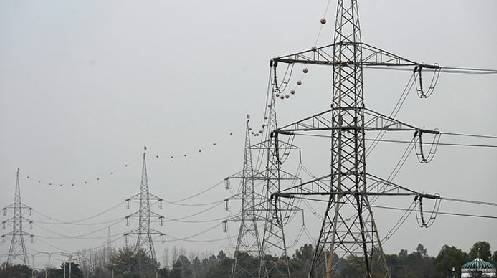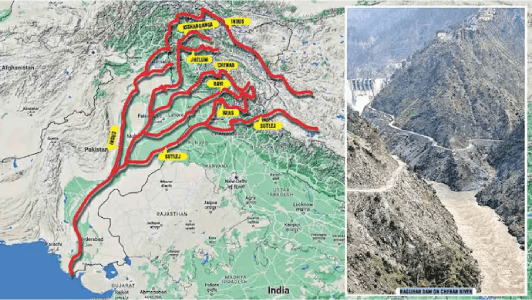Pakistan’s power transmission system serves as the backbone of the electricity sector, facilitating the transfer of electricity from power generation plants to consumers across the country.
However, despite significant investments in generation capacity, the transmission network remains outdated, inefficient and increasingly strained, preventing the effective delivery of electricity where it is needed the most. The country has invested heavily in expanding power generation, particularly in coal, nuclear and renewable energy projects, but the benefits of this expansion remain unrealised due to severe transmission bottlenecks. The National Transmission & Despatch Company (NTDC), responsible for managing the national grid, faces overloaded infrastructure, technical losses, and underutilisation of key assets, all of which contribute to higher electricity prices and an unreliable supply for consumers.
Pakistan’s transmission network, particularly at the 500 kV and 220 kV voltage levels, has failed to keep pace with the growing power generation capacity. Major transmission lines and grid stations are frequently overloaded, especially in central and northern regions where demand is high, but transmission capacity is limited. This overload has forced the use of costlier and less efficient power plants, driving up electricity costs for consumers.
The financial losses from transmission congestion have escalated sharply in recent years, reaching Rs3.67 billion in FY2021-22, rising to Rs20.2 billion in FY2022-23, and further surging to Rs60.38 billion in FY2023-24. These figures reflect the growing inability of the transmission network to handle demand efficiently, leading to underutilisation of cheaper power sources in the south and increased reliance on expensive backup generation in the north.
At the same time, Pakistan’s Available Transfer Capacity (ATC), which determines the NTDC’s ability to transfer power from the southern to northern regions, remains dangerously low. During summer, the ATC stands at approximately 4,500MW, but in winter, it drops to 2,500MW and can fall further to 2,000MW during maintenance periods. This is a critical shortfall, as power demand in northern Pakistan frequently exceeds available transmission capacity, leading to forced load-shedding and higher operational costs.
High transmission losses further weaken the efficiency of the power sector, as a significant portion of the electricity sent into the grid is lost before it reaches consumers. For FY2023-24, the NTDC’s reported transmission losses stood at 2.52 per cent, leading to the loss of 3,377 GWh of electricity. The Sindh Transmission & Dispatch Company (STDC), which operates the 132 kV transmission system, reported even higher losses, averaging 2.86 per cent and surpassing the Nepra-approved limit of 2.0 per cent. These losses contribute to increased electricity tariffs and reduce the overall efficiency of power delivery.
One of the most ambitious power transmission projects in Pakistan’s history is the 660 kV High Voltage Direct Current (HVDC) transmission line, designed to efficiently transfer electricity from coal and nuclear plants in southern Pakistan to demand centers in the north. However, despite its massive potential, the HVDC line remains severely underutilised due to system stability challenges and inadequate infrastructure. In FY2023-24, the HVDC line transmitted only 13,226.60 GWh, resulting in a utilisation factor of just 38 per cent, far below its 4,000MW design capacity.
This underutilisation has significant financial implications, with capacity payments to the Pakistan Matiari-Lahore Transmission Company (PMLTC) amounting to Rs97.83 billion, pushing the average per-unit cost of electricity transmitted through this line to Rs7.39/kWh. The failure to fully integrate such an important asset into the national grid exposes the lack of long-term planning and coordination in Pakistan’s power sector.
The China-Pakistan Economic Corridor (CPEC) presents a historic opportunity to modernise Pakistan’s power transmission network and resolve long-standing structural inefficiencies. Under CPEC’s energy and infrastructure initiatives, China has already played a crucial role in financing new power plants, but the focus must now shift towards strengthening the transmission system to fully realise the benefits of increased generation capacity.
With China’s experience in grid modernisation and large-scale transmission projects, CPEC could serve as a transformative catalyst for revamping Pakistan’s national grid, provided that projects are aligned with the country’s long-term energy security objectives
Several CPEC-related projects could significantly improve Pakistan’s transmission capabilities. The development of new HVDC transmission corridors in collaboration with China could help expand south-to-north power transfer, ensuring that coal-based and renewable energy generation is effectively integrated into the national grid. Investment in smart grid technology, including real-time monitoring systems, automated fault detection, and load-balancing software, could enhance the efficiency and stability of Pakistan’s transmission network.
Strengthening regional connectivity through transmission interconnections with China, Afghanistan, and Central Asia could provide Pakistan with access to surplus electricity from neighbouring regions, allowing the country to export excess electricity during the summer and import power in the winter, reducing seasonal demand fluctuations. Upgrading outdated 500 kV and 220 kV substations with Chinese expertise and financing could also help reduce system congestion and eliminate bottlenecks that currently force the reliance on expensive backup power plants.
With China’s experience in grid modernisation and large-scale transmission projects, CPEC could serve as a transformative catalyst for revamping Pakistan’s national grid, provided that projects are aligned with the country’s long-term energy security objectives.
Recognising the urgency of addressing transmission challenges, the NTDC has revised its investment plan, increasing the required funding from Rs370 billion to Rs510 billion. The plan includes 51 system expansion projects worth Rs172.6 billion, 30 power evacuation projects totaling Rs277.4 billion, and special projects for the integration of Special Economic Zones, amounting to Rs30.3 billion.
Major grid station expansions are also planned to resolve transmission bottlenecks. The 500 kV Multan Grid Station, the 500 kV Muzaffargarh Grid Station, and the 220 kV Islamabad University Grid Station are all scheduled for completion by 2027, while the 500 kV Rawat Grid Station is expected to be completed between 2026 and 2027. These projects are critical for reducing transmission losses, improving system efficiency, and expanding network capacity to meet future energy demands.
Pakistan’s power transmission system is failing to keep up with its expanding generation capacity, resulting in high costs, inefficient power delivery and forced loadshedding. Without immediate and strategic interventions, the country will continue to suffer from power shortages, inflated electricity tariffs, and wasted investments in new generation projects. The government must accelerate transmission system upgrades, invest in smart grid technologies, and ensure the full utilisation of the HVDC line. Leveraging CPEC for large-scale grid modernisation could also unlock long-term benefits for Pakistan’s energy sector, ensuring that electricity is delivered efficiently, affordably and reliably.
To improve Pakistan’s transmission sector, urgent reforms are needed, including removing grid congestion by upgrading overloaded transmission lines and substations, particularly in 500 kV and 220 kV networks. The 660 kV HVDC Matiari-Lahore transmission line must be fully utilised by expanding AC corridor capacity, reducing underutilisation costs of Rs97.83 billion. Seasonal power transfer constraints must be addressed by expanding south-to-north transmission capacity, ensuring stable electricity supply throughout the year. Grid stability enhancements, including SCADA integration and automated fault detection, are necessary to reduce power interruptions.
Transmission losses, currently at 2.52 per cent (3,377 GWh lost), must be minimised through smart grid deployment and AI-driven energy management systems. CPEC investment in grid modernisation should be leveraged to develop additional HVDC corridors and cross-border power connections. The NTDC’s investment plan, now increased to Rs510 billion, should be monitored for timely execution with performance-based oversight.
Operationalising competitive market mechanisms in transmission, such as independent grid management entities and private power wheeling agreements, can enhance efficiency and investment. Lastly, regulatory reforms must streamline private sector participation and tariff approvals, ensuring a modern, reliable and cost-effective power transmission network.
With a combination of domestic policy reforms, international collaboration and infrastructure investments, Pakistan has the potential to transform its power transmission system into a modern, efficient and resilient grid capable of supporting future energy needs. However, any delays in implementing reforms and investments could further destabilise an already fragile power sector, prolonging economic hardships for millions of Pakistanis.







